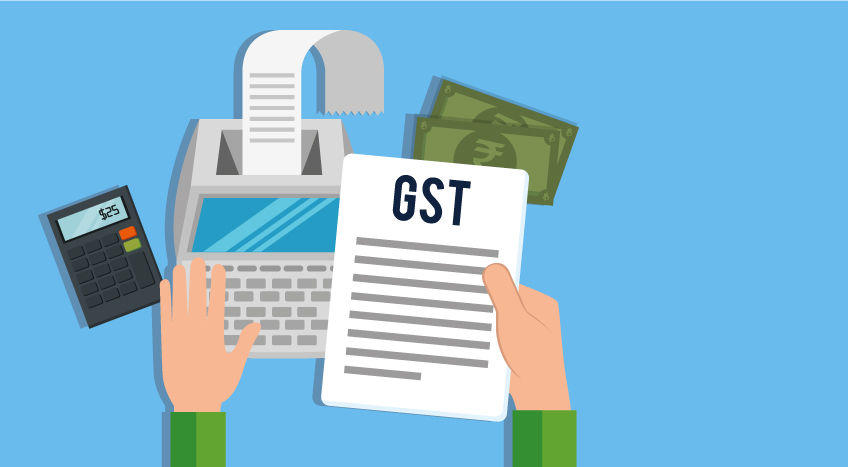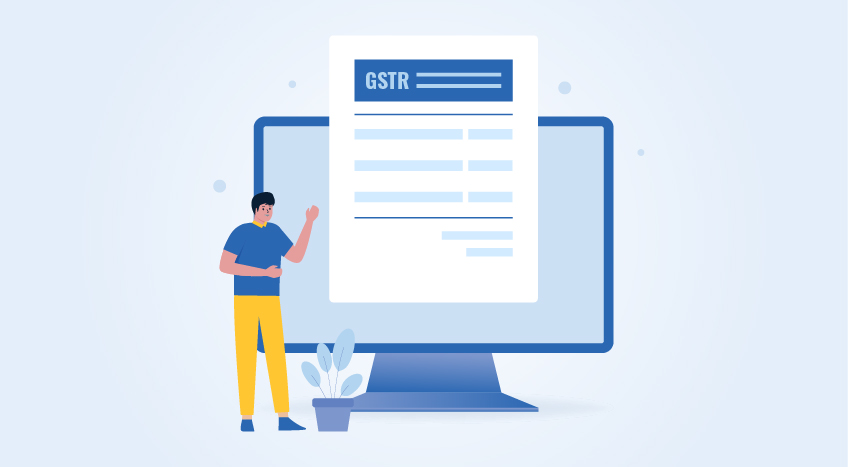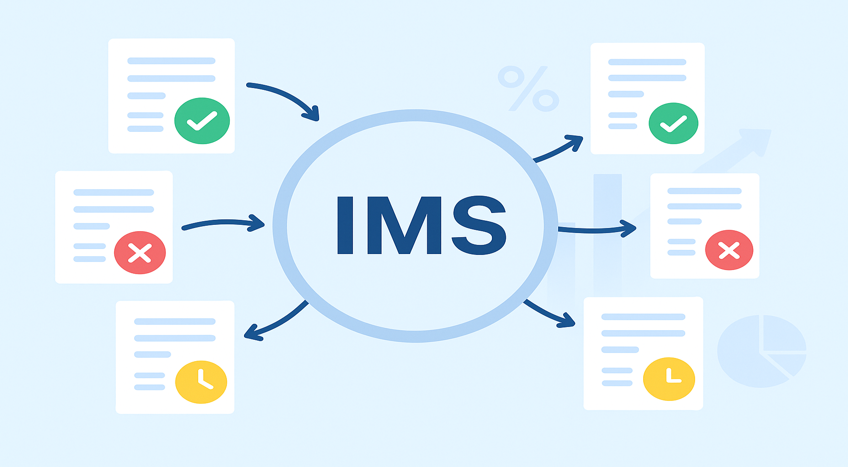Tired of dealing with surprise mismatches in your GSTR-2B right before filing?
The Invoice Management System (IMS) is designed to solve exactly that. It gives you complete visibility into invoices uploaded by your suppliers, lets you act on them in real-time, and helps you avoid costly ITC errors. Instead of waiting for discrepancies to show up later, IMS allows you to take charge well in advance.
Here’s a simple, step-by-step guide to using IMS for claiming Input Tax Credit (ITC) without stress.
Step 1: Supplier uploads invoices
The process begins with your suppliers. Once they upload invoices in GSTR-1 or through IFF, those invoices start reflecting in your IMS dashboard.
- For example, if your supplier uploads an invoice worth ₹10,000 with ₹1,800 GST on April 10, you’ll see it almost immediately in IMS — even before your GSTR-2B is generated.
Step 2: Open the IMS dashboard
To view uploaded invoices, log in to the GST portal and navigate as follows:
Services → Returns → Invoice Management System (IMS) Dashboard
On the dashboard, you’ll find details such as:
- Supplier GSTIN
- Invoice number and type (regular invoice, credit note, etc.)
- Trade name
This becomes your single workspace to check and manage ITC-related invoices.
IMS portal hands-on experienceTry this interactive demo to explore invoice management on the IMS dashboard, without impacting your real data. Start Demo |
Step 3: Review invoices and take action
For each invoice, you can choose one of three actions:
- Accept / No Action → Use this if the invoice is correct and ITC-eligible.
- Reject → If the invoice doesn’t belong to you, or has errors.
- Pending → Keep invoices on hold if you need clarification or are waiting for goods/services.
Pro tip: Marking invoices as Pending avoids accidental ITC claims until you’re sure.
Step 4: Know how your action impacts GSTR-2B & GSTR-3B
Your choices decide what finally reflects in your returns:
|
Action |
In GSTR-2B? |
In GSTR-3B? |
Impact |
|
Accepted / No Action |
Yes |
Yes |
Counted in ITC |
|
Rejected |
Yes (under ITC rejected) |
No |
For records only |
|
Pending |
No |
No |
Can be acted on later |
If you don’t act at all, the system treats invoices as “deemed accepted”, which could be risky if an incorrect invoice gets included.
Step 5: Actions after the 14th? Re-compute GSTR-2B
Since GSTR-2B is generated on the 14th of every month, any actions you take later (before filing GSTR-3B) will not auto-update. You’ll need to re-compute GSTR-2B so the changes reflect properly.
Best practice: Try to complete reviews before the 14th to avoid last-minute rework.
Step 6: ITC calculation in IMS
Here’s how ITC is computed based on your actions:
- If all invoices are correct → Accepted + No Action
- If there are rejections/pending → (Accepted + No Action) – (Rejected + Pending)
- If pending invoices are later accepted → (Accepted + No Action + Pending) – Rejected
IMS with TallyPrime: Smarter ITC, seamless compliance
TallyPrime’s Invoice Management System (IMS) is a connected GST solution that ensures you claim the right ITC at the right time. With real-time invoice visibility, instant reconciliation, and action-based controls, it eliminates last-minute mismatches and reduces compliance stress.
Key benefits of using IMS in TallyPrime
- Real-time visibility: See supplier invoices as soon as they’re uploaded—no waiting till GSTR-2B.
- Action-based control: Accept, Reject, or keep invoices Pending for clarity and accuracy.
- Auto-reconciliation: Match supplier invoices with purchase records in one click.
- Bulk actions: Handle hundreds of invoices at scale—beyond the GST portal’s 500 limit.
- Complete tracking: Single-view summary for pending, accepted, and rejected invoices.
- Deemed acceptance: Flexibility where explicit action isn’t needed.
- Predictable ITC & cash flow: Timely actions mean fewer reversals, smoother audits, and reliable compliance.
In short, using IMS in TallyPrime simplifies GST return filing, keeps your ITC accurate, and gives you unmatched control over compliance—all within your accounting system.
Best practices for using IMS
- Check invoices regularly instead of waiting for deadlines
- Use the Pending option to avoid accidental wrong claims
- Always re-compute if you act after the 14th
- Keep track of mismatches early to avoid disputes later
Final thoughts
IMS is more than just a compliance tool — it’s your control panel for managing ITC effectively. By reviewing supplier invoices early and taking timely action, you can eliminate mismatches, simplify filing, and maximize your eligible ITC without surprises.
Take control of your ITC with IMS today — and make GST compliance smoother than ever.


















